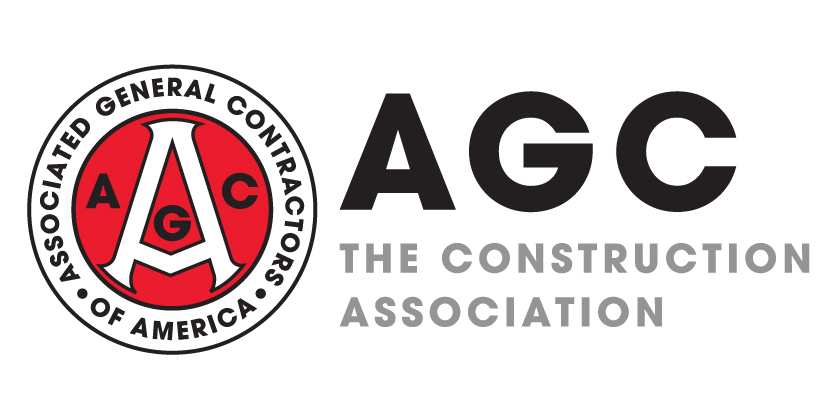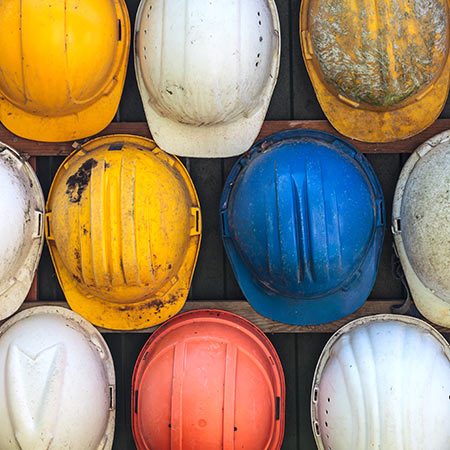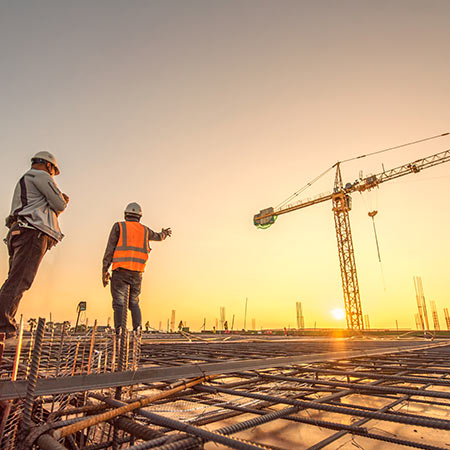
Data from AGC’s latest online survey documents a recent increase in construction firm employment but ongoing concerns about future work. In the June 9-17 survey, the eighth conducted since mid-March, 26% of the 635 respondents reported their firm had added (or recalled) workers in June or earlier, nearly matching the 27% whose firms had furloughed or terminated workers. In addition, 17% anticipate adding employees in the next four weeks, vs. 12% who anticipate needing to furlough or terminate employees. Fewer firms than before reported delays or disruptions to projects (57% vs. 64% or more in the previous four surveys), with only 10% of respondents reporting shortages of personal protective equipment (a share that has declined steadily from 39% in the April 20-23 survey). However, the share of firms reporting new or expanded projects has held roughly flat at 21% (vs. 18-21% in the previous four surveys). Nearly one-third (32%) of respondents report a project scheduled to start in June or later has been canceled (vs. 24% and 20%, respectively, in the two previous surveys). While 26% of firms report their volume of business already matches or exceeds the year-ago level, 30% expect that will not happen for more than six months.
During a media briefing AGC held on Thursday, construction technology firm Procore released an updated analysis of the change in its clients’ jobsite worker hours since March 1 by week, location, project type and contractor revenue size. Worker hours recorded so far for the week of May 31 totaled 14.4 million, the highest in the three months since the 14.0 million hours during the week of March 1. (Procore noted the final total for the most recent weeks is likely to rise, as not all clients enter data immediately.) Only 11 of 48 states had fewer hours in the latest week than in the week of March 1, 34 had more hours, and hours were unchanged in Arizona, Florida and Ohio. (No data were shown for Alaska, Hawaii or the District of Columbia.) However, the data are not seasonally adjusted; thus, it is not clear whether increases in states that normally have more construction hours as spring progresses are due to normal seasonal variation or an easing of coronavirus impacts. Procore also analyzed worker hours in eight metro areas. Compared to March 1, hours in the week of May 31 ranged from 15% higher in Dallas and 4% higher in Miami to 43% lower in New York. The largest increase in hours from trough to peak occurred in areas which had been subject to the greatest restrictions: Seattle (-5% vs. -71% in the week of March 29), New York (-43% vs. -88% the week of April 5) and San Francisco (-8% vs. -53% the week of April 5).
The Census Bureau on Thursday released the results of its seventh Small Business Pulse Survey, with responses from June 7 to 13, that “is intended to provide crucial weekly data on the impact of the COVID-19 crisis on the nation’s businesses.” Again there was modest improvement in several metrics for construction firms. The share of firms that added employees (10.9%) was consistent with the previous four weeks (10.1%-11.5%). The share with a decrease in employees (10.0%) declined from 12.1% in the May 31-June 6 week. For the sixth-straight week there was a decline in the share reporting supply-chain disruptions (29.8% vs. 31.4% the week before). The share of construction respondents that closed a location for at least one day declined to 14.4% from 17.8%. The share of construction firms that reported “little or no effect on…normal level of operations relative to one year ago” rose to a series high of 21.5% from 17.1% one week earlier. More predicted a return to usual level within three months or less (25.6% vs. 22.3%). The percentage who expect that returning to normal level would take more than six months was virtually unchanged (29.9% vs. 30.2% a week earlier), the share who do not believe their business will return to normal decreased to 4.0% from 6.3%.
Seasonally adjusted construction employment increased between April and May in 45 states and the District of Columbia and decreased in five states, according to AGC’s analysis of Bureau of Labor Statistics (BLS) data posted on Friday. Michigan had the largest percentage increase (51%, 50,500 jobs), followed by Pennsylvania which had the largest numerical increase (77,400, 49%). Hawaii lost the largest number and highest percentage of construction jobs (-700 jobs, -1.9%). From May 2019 to May 2020, 12 states added construction jobs while 38 states and D.C lost jobs. South Dakota—the only state to add construction jobs in April—had the largest year-over-year (y/y) percentage increase (10%, 2,400), followed by Utah (7.6%, 8,200). Utah added the largest number of jobs y/y. Both states set new highs for construction employment, in a series dating to 1990. The largest y/y percentage decline occurred in Vermont (-26.1%, -4,000), closely followed by New York (-25.9%, -105,300), which lost the most jobs over the year. (BLS reports combined totals for mining, logging and construction in D.C., Delaware and Hawaii.)
Total construction starts (dollars) rose 3% from April to May at a seasonally adjusted annual rate, “following a 25% decline the previous month,” Dodge Data & Analytics reported on June 15. “Several large nonresidential building projects broke ground in May, resulting in the gain. Removing those large projects from the statistics would have resulted in no change in starts over the month. In May, nonresidential buildings increased 8%, while residential building starts rose 4%. Nonbuilding starts, however, declined 4% during the month.”
Housing starts (units) increased 4.3% at a seasonally adjusted annual rate from April to May but tumbled 23% y/y, Census reported on Tuesday. Multifamily (five or more units) starts jumped 17% for the month but plunged 33% y/y. Single-family starts inched up 0.1% from April but sank 18% y/y. Residential permits increased 14% from April but were down 8.8% y/y, with multifamily permits up 18% for the month but down 8.4% y/y and single-family permits up 12% for the month but down 9.9% y/y.




